Легендарная фисташковая серия Weibo
- Каталог серий Weibo
-
- Серия примеров технических ситуаций микропроекта Python
- Каталог Weibo
-
- 1. Цели микропроекта
- 2. Пример кода прототипа
- 3. Расширьте идеи
- 4. Добавьте примеры кодов для разных типов красавиц.
- 5. Пример кода для повышения уровня сложности
- 6. Добавьте пример кода для специальных реквизитов.
- 7. Пример кода разработки системы уровней
- 8. Добавьте звуковые эффекты и пример кода фоновой музыки.
- 9. Пример кода режима многопользовательской игры
- 10. Пример кода системы рангов и достижений
- 11. Добавьте пример кода эффекта анимации
Каталог серий Weibo
Серия примеров технических ситуаций микропроекта Python
Каталог Weibo
1. Цели микропроекта
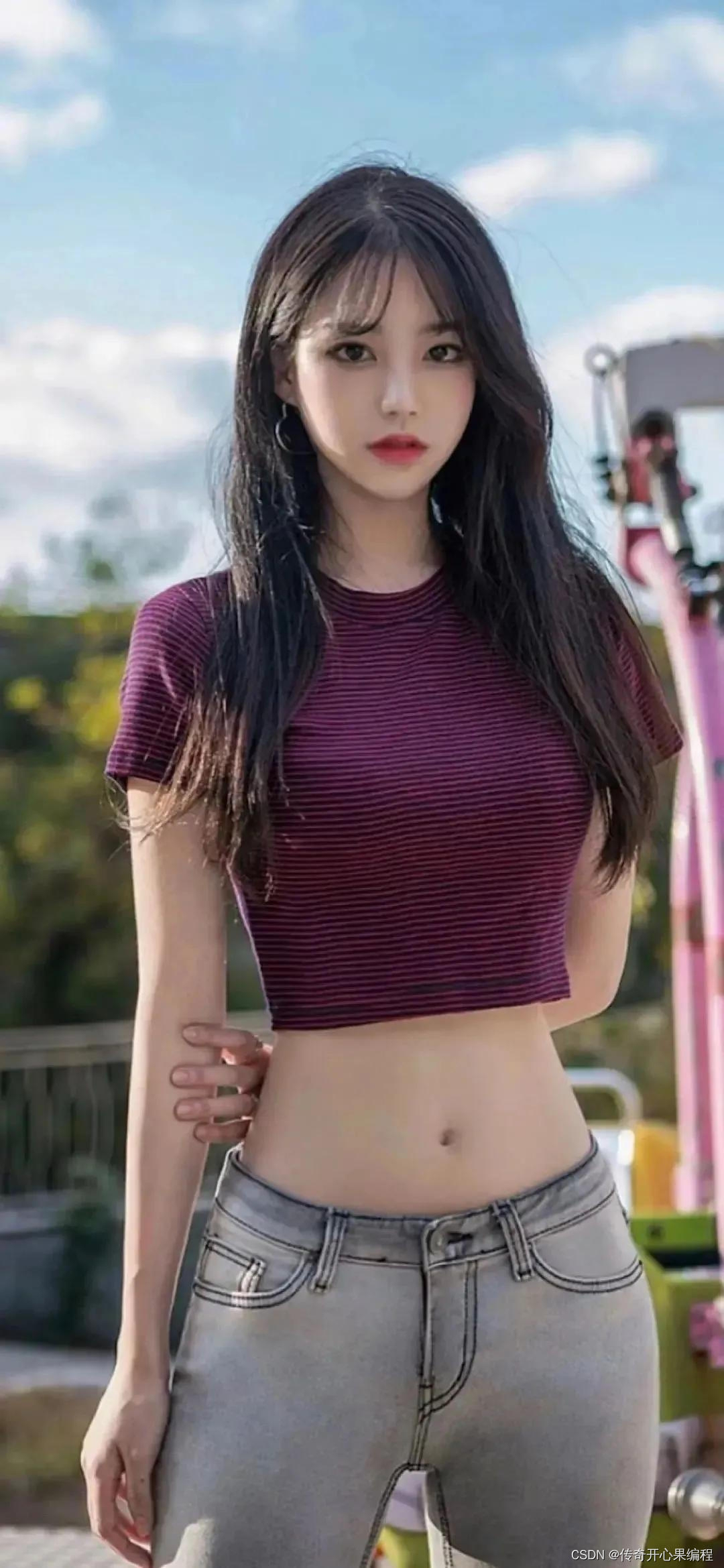
Используйте pygame, чтобы реализовать объектно-ориентированный пример кода небольшой игры по оценке красавиц, оценке красоты, оценке красивых красавиц с привлекательной внешностью и превращению программирования в средней школе в увлекательное занятие.
2. Пример кода прототипа
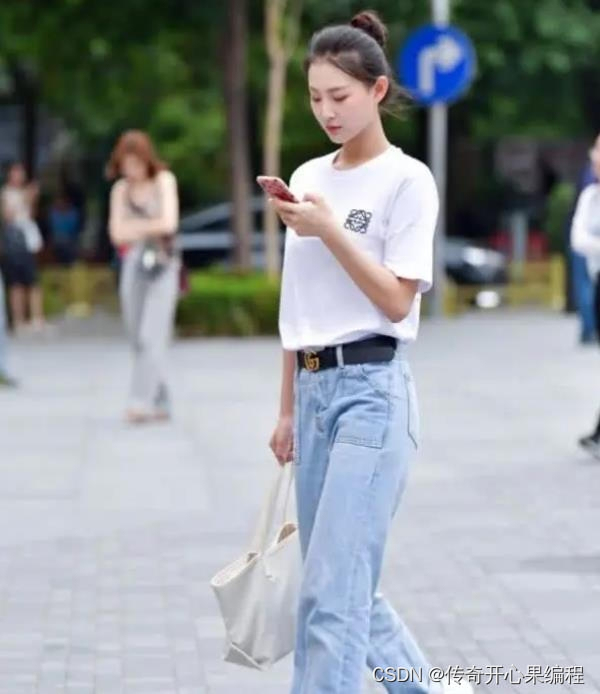 Ниже приведен пример кода для использования Pygame для реализации объектно-ориентированной программы для оценки красавиц:
Ниже приведен пример кода для использования Pygame для реализации объектно-ориентированной программы для оценки красавиц:
import pygame
import random
# 初始化游戏
pygame.init()
# 设置窗口大小和标题
screen_width = 800screen_height = 600
window = pygame.display.set_mode((screen_width, screen_height))
pygame.display.set_caption("给美女打分")
# 定义美女类
class Beauty(pygame.sprite.Sprite):
__init__(self, x, y):
().__init__()
self.image = pygame.image.loadbeauty.png") # 美女的
self.rect = self.image.get_rect()
self.rect.center = (x, y)
def update(self):
pass
# 定义分数类
class Score(pygame.sprite.Sprite):
def __init__(self, x, y):
super().__init__()
self.score = 0
self.font = pygame.font.Font(None, 36)
self.text = self.font.render("Score: " + str(self.score), True, (255, 255, 255))
self.rect = self.text.get_rect()
self.rect.center = (x, y)
def update(self):
self.text = self.font.render("Score: " + str(self.score), True, (255, 255, 255))
# 创建精灵组
all_sprites = pygame.sprite.Group()
# 创建美女对象
beauty = Beauty(screen_width // 2, screen_height // 2)
all_sprites.add(beauty)
# 创建分数对象
score = Score(screen_width // 2, 50)
all_sprites.add(score)
# 游戏主循环
running = True
clock = pygame.time.Clock()
while running:
clock.tick(60)
# 事件处理
for event in pygame.event.get():
if event.type == pygame.QUIT:
running = False
# 更新精灵组中的所有精灵
all_sprites.update()
# 绘制背景
window.fill((0, 0, 0))
# 绘制所有精灵
all_sprites.draw(window)
# 刷新屏幕
pygame.display.flip()
# 退出游戏
pygame.quit()
Обратите внимание, что в приведенном выше коде красивое изображение с именем «beauty.png» должно быть подготовлено как файл ресурсов, необходимый для запуска программы. Вы можете заменить его другими изображениями красивых женщин по вашему желанию. После запуска кода вы можете с помощью мыши оценивать красавиц в окне. Программа отобразит текущий счет в строке заголовка окна.
3. Расширьте идеи
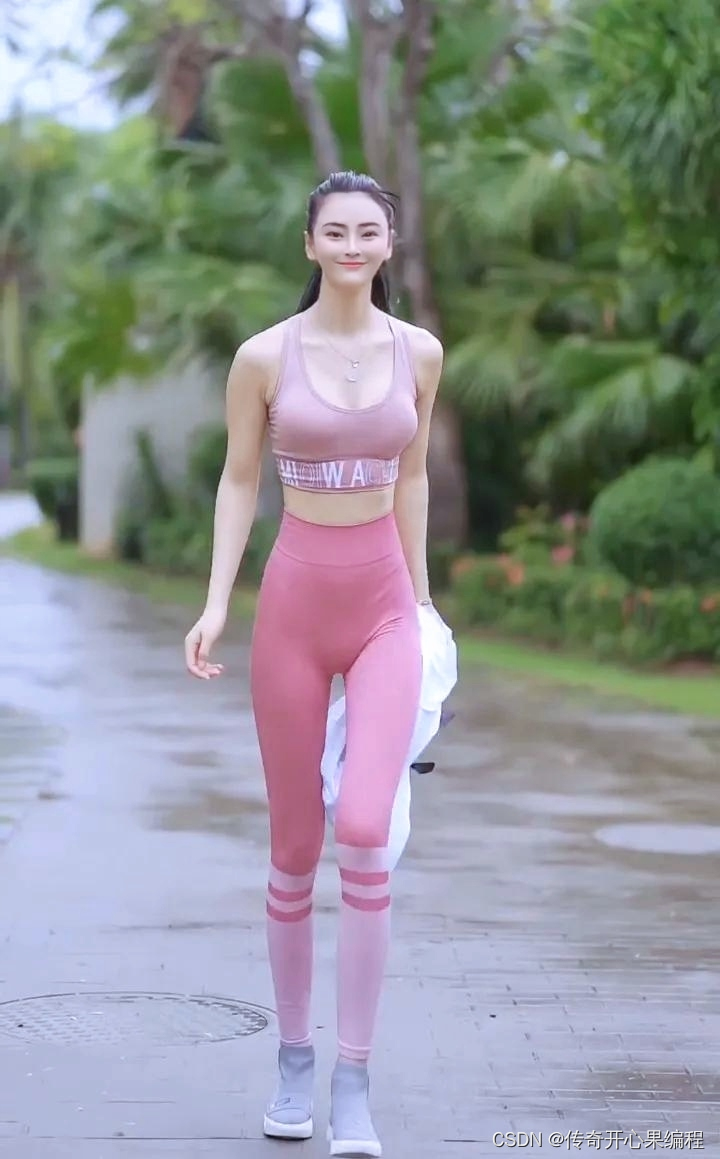 Использование Pygame для реализации объектно-ориентированной программы оценки красоты - это всего лишь простой пример. Идей расширения может быть много. Вот некоторые возможные идеи расширения:
Использование Pygame для реализации объектно-ориентированной программы оценки красоты - это всего лишь простой пример. Идей расширения может быть много. Вот некоторые возможные идеи расширения:
-
Добавляйте разные типы красавиц. Вы можете создать несколько объектов красавиц и использовать разные ресурсы изображений для представления разных типов красавиц. Каждая красавица может иметь свой собственный балл и особые атрибуты.
-
Увеличение уровня сложности: сложность игры можно регулировать в зависимости от очков игрока, например, увеличивая скорость движения и частоту появления красавиц или увеличивая сложность получения очков.
-
Добавление специального реквизита: в игру можно добавить специальный реквизит. Игроки могут щелкнуть мышью, чтобы получить реквизит, чтобы увеличить количество очков или изменить правила игры.
-
Система уровней дизайна: вы можете создавать несколько уровней, каждый из которых отличается красотой и целями игры. Игрокам необходимо набрать столько красавиц, сколько необходимо для прохождения уровня.
-
Добавьте звуковые эффекты и фоновую музыку: вы можете добавить в игру звуковые эффекты и фоновую музыку, чтобы сделать игру еще интереснее и атмосфернее.
-
Режим многопользовательской игры: вы можете добавить режим многопользовательской игры, позволяющий нескольким игрокам одновременно участвовать в подсчете очков и сравнивать, у кого больше очков.
-
Система рейтингов и достижений: можно записывать самые высокие баллы игроков, а также предусмотрена система рейтингов и достижений, позволяющая игрокам соревноваться и сравнивать.
-
Добавляйте анимационные эффекты: Вы можете добавить некоторые анимационные эффекты к появлению, исчезновению или подсчету очков красавиц, чтобы сделать игру более яркой и интересной.
Это лишь некоторые возможные идеи расширения. Вы можете спроектировать и реализовать более интересные функции и игровой процесс в соответствии со своими творческими способностями и потребностями. Используя богатую функциональность и гибкость Pygame, вы можете превратить эту простую программу подсчета очков в увлекательную игру.
4. Добавьте примеры кодов для разных типов красавиц.
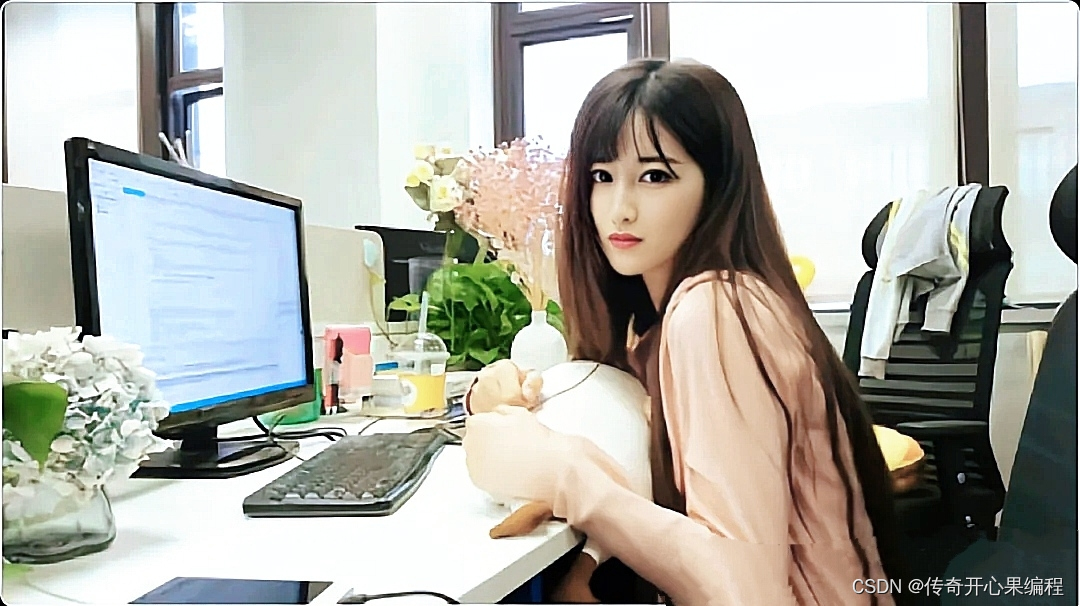 Вот пример кода, расширенный для разных типов красавиц:
Вот пример кода, расширенный для разных типов красавиц:
import pygame
import random
# 初始化游戏
pygame.init()
# 设置窗口大小和标题
screen_width = 800
screen_height = 600
window = pygame.display.set_mode((screen_width, screen_height))
pygame.display.set_caption("给美女打分")
# 定义美女类
class Beauty(pygame.sprite.Sprite):
def __init__(self, x, y, image, score, special_attribute):
super().__init__()
self.image = pygame.image.load(image) # 美女的图片资源
self.rect = self.image.get_rect()
self.rect.center = (x, y)
self.score = score # 美女的得分
self.special_attribute = special_attribute # 美女的特殊属性
def update(self):
pass
# 定义分数类
class Score(pygame.sprite.Sprite):
def __init__(self, x, y):
super().__init__()
self.score = 0
self.font = pygame.font.Font(None, 36)
self.text = self.font.render("Score: " + str(self.score), True, (255, 255, 255))
self.rect = self.text.get_rect()
self.rect.center = (x, y)
def update(self):
self.text = self.font.render("Score: " + str(self.score), True, (255, 255, 255))
# 创建精灵组
all_sprites = pygame.sprite.Group()
# 创建美女对象
beauty1 = Beauty(screen_width // 2 - 100, screen_height // 2, "beauty1.png", 10, "可爱")
beauty2 = Beauty(screen_width // 2 + 100, screen_height // 2, "beauty2.png", 20, "靓丽")
all_sprites.add(beauty1)
all_sprites.add(beauty2)
# 创建分数对象
score = Score(screen_width // 2, 50)
all_sprites.add(score)
# 游戏主循环
running = True
clock = pygame.time.Clock()
while running:
clock.tick(60)
# 事件处理
for event in pygame.event.get():
if event.type == pygame.QUIT:
running = False
# 更新精灵组中的所有精灵
all_sprites.update()
# 绘制背景
window.fill((0, 0, 0))
# 绘制所有精灵
all_sprites.draw(window)
# 刷新屏幕
pygame.display.flip()
# 退出游戏
pygame.quit()
В этом примере кода мы создаем два разных типа объектов красоты: beauty1 и beauty2. Они используют разные ресурсы изображений («beauty1.png» и «beauty2.png») соответственно и имеют разные оценки и специальные атрибуты. Вы можете добавить больше объектов красоты в соответствии с вашими потребностями и установить разные атрибуты для каждой красоты.
Примечание. Вам необходимо подготовить соответствующие ресурсы красивых изображений, назвать их «beauty1.png» и «beauty2.png» и поместить их в тот же каталог, что и пример кода.
5. Пример кода для повышения уровня сложности
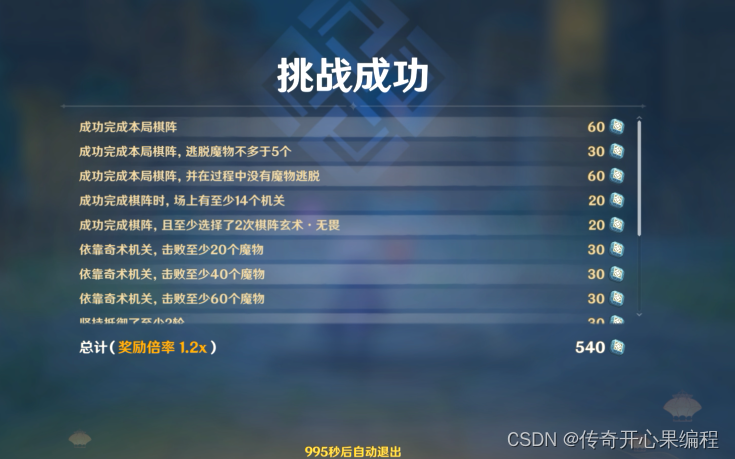 Вот пример кода для настройки сложности игры на основе очков игрока:
Вот пример кода для настройки сложности игры на основе очков игрока:
import pygame
import random
# 初始化游戏
pygame.init()
# 设置窗口大小和标题
screen_width = 800
screen_height = 600
window = pygame.display.set_mode((screen_width, screen_height))
pygame.display.set_caption("给美女打分")
# 定义美女类
class Beauty(pygame.sprite.Sprite):
def __init__(self, x, y, image, score, special_attribute, speed):
super().__init__()
self.image = pygame.image.load(image) # 美女的图片资源
self.rect = self.image.get_rect()
self.rect.center = (x, y)
self.score = score # 美女的得分
self.special_attribute = special_attribute # 美女的特殊属性
self.speed = speed # 美女的移动速度
def update(self):
self.rect.x += self.speed
# 定义分数类
class Score(pygame.sprite.Sprite):
def __init__(self, x, y):
super().__init__()
self.score = 0
self.font = pygame.font.Font(None, 36)
self.text = self.font.render("Score: " + str(self.score), True, (255, 255, 255))
self.rect = self.text.get_rect()
self.rect.center = (x, y)
def update(self):
self.text = self.font.render("Score: " + str(self.score), True, (255, 255, 255))
# 创建精灵组
all_sprites = pygame.sprite.Group()
# 创建美女对象
beauty1 = Beauty(screen_width // 2 - 100, screen_height // 2, "beauty1.png", 10, "可爱", 2)
beauty2 = Beauty(screen_width // 2 + 100, screen_height // 2, "beauty2.png", 20, "性感", 3)
all_sprites.add(beauty1)
all_sprites.add(beauty2)
# 创建分数对象
score = Score(screen_width // 2, 50)
all_sprites.add(score)
# 游戏主循环
running = True
clock = pygame.time.Clock()
spawn_timer = 0
difficulty_level = 1
while running:
clock.tick(60)
# 事件处理
for event in pygame.event.get():
if event.type == pygame.QUIT:
running = False
# 更新精灵组中的所有精灵
all_sprites.update()
# 控制美女的出现频率和移动速度
spawn_timer += 1
if spawn_timer >= 60 / difficulty_level:
beauty = Beauty(screen_width + 50, random.randint(50, screen_height - 50), "beauty1.png", 10, "可爱", random.randint(2, 4))
all_sprites.add(beauty)
spawn_timer = 0
# 碰撞检测
collisions = pygame.sprite.spritecollide(beauty1, all_sprites, True)
for collision in collisions:
score.score += collision.score
# 根据得分调整难度
if score.score >= 50 and difficulty_level < 3:
difficulty_level = 2
elif score.score >= 100 and difficulty_level < 4:
difficulty_level = 3
# 绘制背景
window.fill((0, 0, 0))
# 绘制所有精灵
all_sprites.draw(window)
# 刷新屏幕
pygame.display.flip()
# 退出游戏
pygame.quit()
В этом примере кода мы вводим spawn_timerпеременную для управления частотой появления красивых женщин. Он увеличивается каждый кадр spawn_timer, и когда он достигает определенного значения, создается новый объект красоты, который spawn_timerсбрасывается до 0. По мере увеличения счета difficulty_levelпеременные будут постепенно увеличиваться, тем самым влияя на скорость движения и частоту красоты.
Примечание. Вам необходимо подготовить соответствующие ресурсы красивых изображений, назвать их «beauty1.png» и «beauty2.png» и поместить их в тот же каталог, что и пример кода.
6. Добавьте пример кода для специальных реквизитов.
 Вот пример кода для добавления специальных реквизитов:
Вот пример кода для добавления специальных реквизитов:
import pygame
import random
# 初始化游戏
pygame.init()
# 设置窗口大小和标题
screen_width = 800
screen_height = 600
window = pygame.display.set_mode((screen_width, screen_height))
pygame.display.set_caption("给美女打分")
# 定义美女类
class Beauty(pygame.sprite.Sprite):
def __init__(self, x, y, image, score, special_attribute, speed):
super().__init__()
self.image = pygame.image.load(image) # 美女的图片资源
self.rect = self.image.get_rect()
self.rect.center = (x, y)
self.score = score # 美女的得分
self.special_attribute = special_attribute # 美女的特殊属性
self.speed = speed # 美女的移动速度
def update(self):
self.rect.x += self.speed
# 定义分数类
class Score(pygame.sprite.Sprite):
def __init__(self, x, y):
super().__init__()
self.score = 0
self.font = pygame.font.Font(None, 36)
self.text = self.font.render("Score: " + str(self.score), True, (255, 255, 255))
self.rect = self.text.get_rect()
self.rect.center = (x, y)
def update(self):
self.text = self.font.render("Score: " + str(self.score), True, (255, 255, 255))
# 定义道具类
class PowerUp(pygame.sprite.Sprite):
def __init__(self, x, y, image, effect):
super().__init__()
self.image = pygame.image.load(image) # 道具的图片资源
self.rect = self.image.get_rect()
self.rect.center = (x, y)
self.effect = effect # 道具的效果
def update(self):
pass
# 创建精灵组
all_sprites = pygame.sprite.Group()
# 创建美女对象
beauty1 = Beauty(screen_width // 2 - 100, screen_height // 2, "beauty1.png", 10, "可爱", 2)
beauty2 = Beauty(screen_width // 2 + 100, screen_height // 2, "beauty2.png", 20, "性感", 3)
all_sprites.add(beauty1)
all_sprites.add(beauty2)
# 创建分数对象
score = Score(screen_width // 2, 50)
all_sprites.add(score)
# 创建道具对象
power_up = PowerUp(screen_width // 2, screen_height // 2, "power_up.png", "double_score")
all_sprites.add(power_up)
# 游戏主循环
running = True
clock = pygame.time.Clock()
spawn_timer = 0
difficulty_level = 1
while running:
clock.tick(60)
# 事件处理
for event in pygame.event.get():
if event.type == pygame.QUIT:
running = False
elif event.type == pygame.MOUSEBUTTONDOWN:
if power_up.rect.collidepoint(event.pos):
if power_up.effect == "double_score":
score.score *= 2
power_up.kill()
# 更新精灵组中的所有精灵
all_sprites.update()
# 控制美女的出现频率和移动速度
spawn_timer += 1
if spawn_timer >= 60 / difficulty_level:
beauty = Beauty(screen_width + 50, random.randint(50, screen_height - 50), "beauty1.png", 10, "可爱", random.randint(2, 4))
all_sprites.add(beauty)
spawn_timer = 0
# 碰撞检测
collisions = pygame.sprite.spritecollide(beauty1, all_sprites, True)
for collision in collisions:
score.score += collision.score
# 绘制背景
window.fill((0, 0, 0))
# 绘制所有精灵
all_sprites.draw(window)
# 刷新屏幕
pygame.display.flip()
# 退出游戏
pygame.quit()
В этом примере кода мы создаем PowerUpкласс для представления реквизитов, которые можно получить, щелкнув по ним. Когда мы нажимаем на реквизит, мы увеличиваем счет или меняем правила игры в зависимости от эффекта реквизита. В этом примере эффект реквизита заключается в удвоении счета. Когда игрок нажимает на реквизит, счет удваивается.
Примечание. Вам необходимо подготовить соответствующие ресурсы изображений красоты («beauty1.png» и «beauty2.png») и ресурсы изображений реквизита («power_up.png») и поместить их в тот же каталог, что и пример кода.
7. Пример кода разработки системы уровней
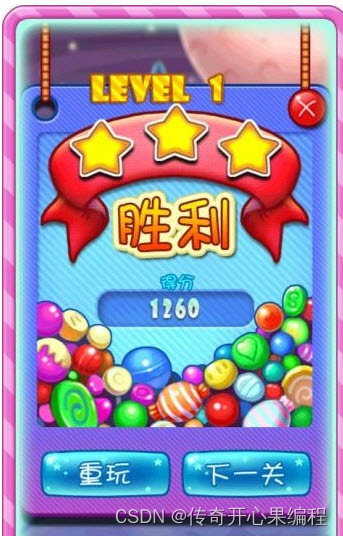 Вот пример кода для проектирования системы уровней:
Вот пример кода для проектирования системы уровней:
import pygame
import random
# 初始化游戏
pygame.init()
# 设置窗口大小和标题
screen_width = 800
screen_height = 600
window = pygame.display.set_mode((screen_width, screen_height))
pygame.display.set_caption("给美女打分")
# 定义美女类
class Beauty(pygame.sprite.Sprite):
def __init__(self, x, y, image, score, special_attribute, speed):
super().__init__()
self.image = pygame.image.load(image) # 美女的图片资源
self.rect = self.image.get_rect()
self.rect.center = (x, y)
self.score = score # 美女的得分
self.special_attribute = special_attribute # 美女的特殊属性
self.speed = speed # 美女的移动速度
def update(self):
self.rect.x += self.speed
# 定义分数类
class Score(pygame.sprite.Sprite):
def __init__(self, x, y, target_score):
super().__init__()
self.score = 0
self.target_score = target_score # 目标得分
self.font = pygame.font.Font(None, 36)
self.text = self.font.render("Score: " + str(self.score), True, (255, 255, 255))
self.rect = self.text.get_rect()
self.rect.center = (x, y)
def update(self):
self.text = self.font.render("Score: " + str(self.score), True, (255, 255, 255))
# 定义关卡类
class Level:
def __init__(self, target_score, beauties):
self.target_score = target_score # 目标得分
self.beauties = beauties # 美女列表
def is_completed(self, score):
return score >= self.target_score
# 创建精灵组
all_sprites = pygame.sprite.Group()
# 创建关卡列表
levels = [
Level(50, [
Beauty(screen_width // 2 - 100, screen_height // 2, "beauty1.png", 10, "可爱", 2),
Beauty(screen_width // 2 + 100, screen_height // 2, "beauty2.png", 20, "性感", 3)
]),
Level(100, [
Beauty(screen_width // 2 - 100, screen_height // 2, "beauty3.png", 15, "甜美", 3),
Beauty(screen_width // 2 + 100, screen_height // 2, "beauty4.png", 25, "迷人", 4)
])
]
current_level = 0
level = levels[current_level]
# 创建分数对象
score = Score(screen_width // 2, 50, level.target_score)
all_sprites.add(score)
# 将当前关卡的美女添加到精灵组中
for beauty in level.beauties:
all_sprites.add(beauty)
# 游戏主循环
running = True
clock = pygame.time.Clock()
spawn_timer = 0
difficulty_level = 1
while running:
clock.tick(60)
# 事件处理
for event in pygame.event.get():
if event.type == pygame.QUIT:
running = False
# 更新精灵组中的所有精灵
all_sprites.update()
# 控制美女的出现频率和移动速度
spawn_timer += 1
if spawn_timer >= 60 / difficulty_level:
beauty = random.choice(level.beauties)
beauty = Beauty(screen_width + 50, random.randint(50, screen_height - 50), beauty.image, beauty.score, beauty.special_attribute, random.randint(2, 4))
all_sprites.add(beauty)
spawn_timer = 0
# 碰撞检测
collisions = pygame.sprite.spritecollide(beauty, all_sprites, True)
for collision in collisions:
score.score += collision.score
# 检查当前关卡是否完成
if level.is_completed(score.score):
current_level += 1
if current_level < len(levels):
level = levels[current_level]
score = Score(screen_width // 2, 50, level.target_score)
all_sprites.add(score)
for beauty in level.beauties:
all_sprites.add(beauty)
else:
running = False
# 绘制背景
window.fill((0, 0, 0))
# 绘制所有精灵
all_sprites.draw(window)
# 刷新屏幕
pygame.display.flip()
# 退出游戏
pygame.quit()
В этом примере кода мы создаем Levelкласс для представления уровней, каждый из которых имеет целевую оценку и набор красавиц. В основном цикле игры мы проверяем, достигает ли счет текущего уровня целевого значения, и если да, то переходим на следующий уровень. Если все уровни пройдены, игра окончена.
Примечание. Вам необходимо подготовить соответствующие ресурсы изображений красоты («beauty1.png», «beauty2.png», «beauty3.png», «beauty4.png») и поместить их в тот же каталог, что и пример кода. Каждый уровень может быть спроектирован с разными красотами и целевыми показателями в соответствии с потребностями.
8. Добавьте звуковые эффекты и пример кода фоновой музыки.
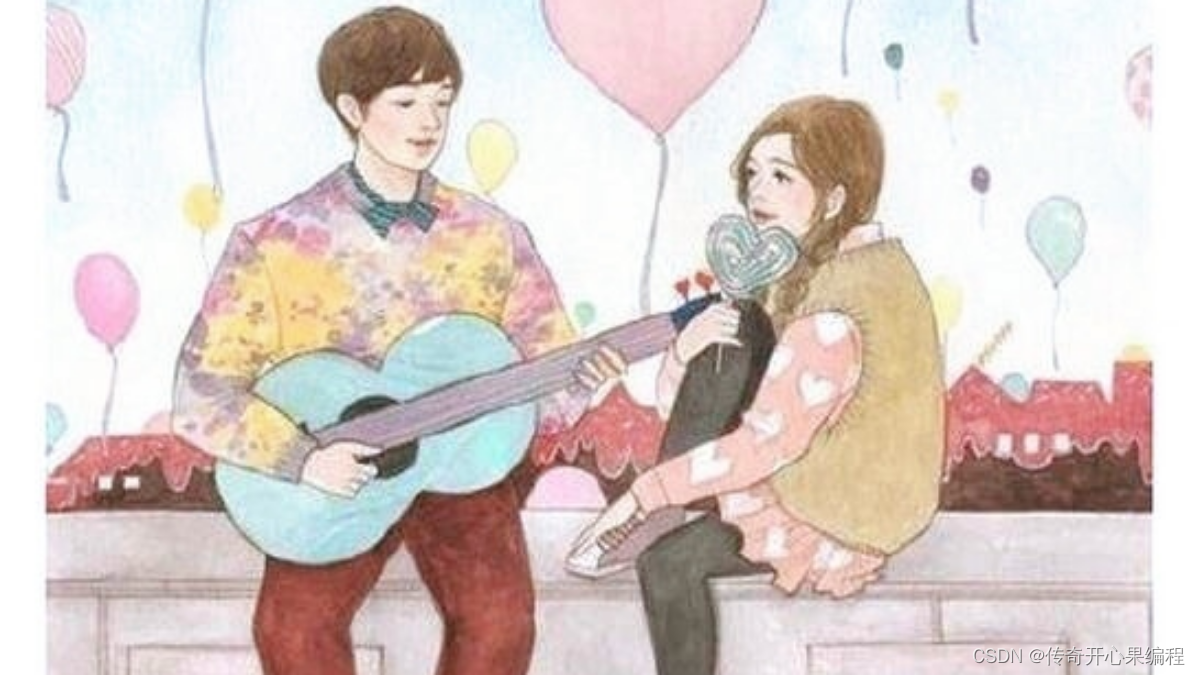 Вот пример кода для добавления звуковых эффектов и фоновой музыки в вашу игру:
Вот пример кода для добавления звуковых эффектов и фоновой музыки в вашу игру:
import pygame
import random
# 初始化游戏
pygame.init()
# 设置窗口大小和标题
screen_width = 800
screen_height = 600
window = pygame.display.set_mode((screen_width, screen_height))
pygame.display.set_caption("给美女打分")
# 加载背景音乐
pygame.mixer.music.load("background_music.mp3")
pygame.mixer.music.set_volume(0.5) # 设置音量
pygame.mixer.music.play(-1) # 循环播放背景音乐
# 加载音效
score_sound = pygame.mixer.Sound("score_sound.wav")
# 定义美女类
class Beauty(pygame.sprite.Sprite):
def __init__(self, x, y, image, score, special_attribute, speed):
super().__init__()
self.image = pygame.image.load(image) # 美女的图片资源
self.rect = self.image.get_rect()
self.rect.center = (x, y)
self.score = score # 美女的得分
self.special_attribute = special_attribute # 美女的特殊属性
self.speed = speed # 美女的移动速度
def update(self):
self.rect.x += self.speed
# 定义分数类
class Score(pygame.sprite.Sprite):
def __init__(self, x, y, target_score):
super().__init__()
self.score = 0
self.target_score = target_score # 目标得分
self.font = pygame.font.Font(None, 36)
self.text = self.font.render("Score: " + str(self.score), True, (255, 255, 255))
self.rect = self.text.get_rect()
self.rect.center = (x, y)
def update(self):
self.text = self.font.render("Score: " + str(self.score), True, (255, 255, 255))
# 定义关卡类
class Level:
def __init__(self, target_score, beauties):
self.target_score = target_score # 目标得分
self.beauties = beauties # 美女列表
def is_completed(self, score):
return score >= self.target_score
# 创建精灵组
all_sprites = pygame.sprite.Group()
# 创建关卡列表
levels = [
Level(50, [
Beauty(screen_width // 2 - 100, screen_height // 2, "beauty1.png", 10, "可爱", 2),
Beauty(screen_width // 2 + 100, screen_height // 2, "beauty2.png", 20, "性感", 3)
]),
Level(100, [
Beauty(screen_width // 2 - 100, screen_height // 2, "beauty3.png", 15, "甜美", 3),
Beauty(screen_width // 2 + 100, screen_height // 2, "beauty4.png", 25, "迷人", 4)
])
]
current_level = 0
level = levels[current_level]
# 创建分数对象
score = Score(screen_width // 2, 50, level.target_score)
all_sprites.add(score)
# 将当前关卡的美女添加到精灵组中
for beauty in level.beauties:
all_sprites.add(beauty)
# 游戏主循环
running = True
clock = pygame.time.Clock()
spawn_timer = 0
difficulty_level = 1
while running:
clock.tick(60)
# 事件处理
for event in pygame.event.get():
if event.type == pygame.QUIT:
running = False
# 更新精灵组中的所有精灵
all_sprites.update()
# 控制美女的出现频率和移动速度
spawn_timer += 1
if spawn_timer >= 60 / difficulty_level:
beauty = random.choice(level.beauties)
beauty = Beauty(screen_width + 50, random.randint(50, screen_height - 50), beauty.image, beauty.score, beauty.special_attribute, random.randint(2, 4))
all_sprites.add(beauty)
spawn_timer = 0
# 碰撞检测
collisions = pygame.sprite.spritecollide(beauty, all_sprites, True)
for collision in collisions:
score.score += collision.score
score_sound.play() # 播放得分音效
# 检查当前关卡是否完成
if level.is_completed(score.score):
current_level += 1
if current_level < len(levels):
level = levels[current_level]
score = Score(screen_width // 2, 50, level.target_score)
all_sprites.add(score)
for beauty in level.beauties:
all_sprites.add(beauty)
else:
running = False
# 绘制背景
window.fill((0, 0, 0))
# 绘制所有精灵
all_sprites.draw(window)
# 刷新屏幕
pygame.display.flip()
# 停止背景音乐
pygame.mixer.music.stop()
# 退出游戏
pygame.quit()
В этом примере кода мы используем pygame.mixer.musicмодуль для загрузки и воспроизведения фоновой музыки. Мы также используем pygame.mixer.Soundкласс для загрузки файла звукового эффекта и воспроизведения звукового эффекта партитуры при ударе по красавице.
Примечание. Вам необходимо подготовить соответствующий музыкальный файл («background_music.mp3») и файл звуковых эффектов («score_sound.wav») и поместить их в тот же каталог, что и пример кода. Убедитесь, что пути к музыкальным файлам и файлам звуковых эффектов указаны правильно.
9. Пример кода режима многопользовательской игры
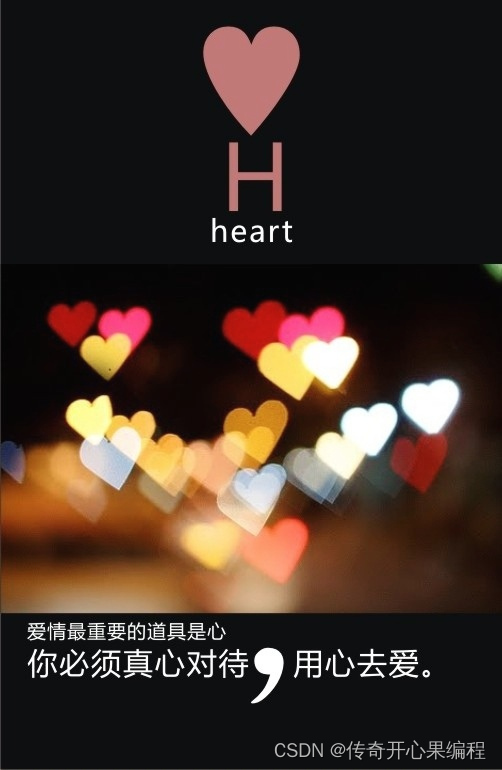 Вот пример кода для добавления многопользовательского режима:
Вот пример кода для добавления многопользовательского режима:
import pygame
import random
# 初始化游戏
pygame.init()
# 设置窗口大小和标题
screen_width = 800
screen_height = 600
window = pygame.display.set_mode((screen_width, screen_height))
pygame.display.set_caption("给美女打分 - 多人游戏模式")
# 加载背景音乐
pygame.mixer.music.load("background_music.mp3")
pygame.mixer.music.set_volume(0.5) # 设置音量
pygame.mixer.music.play(-1) # 循环播放背景音乐
# 加载音效
score_sound = pygame.mixer.Sound("score_sound.wav")
# 定义美女类
class Beauty(pygame.sprite.Sprite):
def __init__(self, x, y, image, score, special_attribute, speed):
super().__init__()
self.image = pygame.image.load(image) # 美女的图片资源
self.rect = self.image.get_rect()
self.rect.center = (x, y)
self.score = score # 美女的得分
self.special_attribute = special_attribute # 美女的特殊属性
self.speed = speed # 美女的移动速度
def update(self):
self.rect.x += self.speed
# 定义分数类
class Score(pygame.sprite.Sprite):
def __init__(self, x, y, player_name):
super().__init__()
self.score = 0
self.player_name = player_name # 玩家名称
self.font = pygame.font.Font(None, 36)
self.text = self.font.render(self.player_name + ": " + str(self.score), True, (255, 255, 255))
self.rect = self.text.get_rect()
self.rect.center = (x, y)
def update(self):
self.text = self.font.render(self.player_name + ": " + str(self.score), True, (255, 255, 255))
# 定义关卡类
class Level:
def __init__(self, target_score, beauties):
self.target_score = target_score # 目标得分
self.beauties = beauties # 美女列表
def is_completed(self, score):
return score >= self.target_score
# 创建精灵组
all_sprites = pygame.sprite.Group()
# 创建关卡列表
levels = [
Level(50, [
Beauty(screen_width // 2 - 100, screen_height // 2, "beauty1.png", 10, "可爱", 2),
Beauty(screen_width // 2 + 100, screen_height // 2, "beauty2.png", 20, "性感", 3)
]),
Level(100, [
Beauty(screen_width // 2 - 100, screen_height // 2, "beauty3.png", 15, "甜美", 3),
Beauty(screen_width // 2 + 100, screen_height // 2, "beauty4.png", 25, "迷人", 4)
])
]
num_players = 2 # 玩家数量
players = [] # 玩家列表
# 创建玩家对象和分数对象
for i in range(num_players):
player_name = "Player " + str(i+1)
player_score = Score(screen_width // 2, 50 + i*50, player_name)
players.append(player_score)
all_sprites.add(player_score)
current_level = 0
level = levels[current_level]
# 将当前关卡的美女添加到精灵组中
for beauty in level.beauties:
all_sprites.add(beauty)
# 游戏主循环
running = True
clock = pygame.time.Clock()
spawn_timer = 0
difficulty_level = 1
while running:
clock.tick(60)
# 事件处理
for event in pygame.event.get():
if event.type == pygame.QUIT:
running = False
elif event.type == pygame.MOUSEBUTTONDOWN:
mouse_pos = pygame.mouse.get_pos()
clicked_sprites = [s for s in all_sprites if s.rect.collidepoint(mouse_pos)]
for sprite in clicked_sprites:
if isinstance(sprite, Beauty):
for player in players:
if player.rect.collidepoint(mouse_pos):
player.score += sprite.score
score_sound.play() # 播放得分音效
# 更新精灵组中的所有精灵
all_sprites.update()
# 控制美女的出现频率和移动速度
spawn_timer += 1
if spawn_timer >= 60 / difficulty_level:
beauty = random.choice(level.beauties)
beauty = Beauty(screen_width + 50, random.randint(50, screen_height - 50), beauty.image, beauty.score, beauty.special_attribute, random.randint(2, 4))
all_sprites.add(beauty)
spawn_timer = 0
# 检查当前关卡是否完成
if level.is_completed(players[0].score):
current_level += 1
if current_level < len(levels):
level = levels[current_level]
for player in players:
player.score = 0
for beauty in level.beauties:
all_sprites.add(beauty)
else:
running = False
# 绘制背景
window.fill((0, 0, 0))
# 绘制所有精灵
all_sprites.draw(window)
# 刷新屏幕
pygame.display.flip()
# 停止背景音乐
pygame.mixer.music.stop()
# 退出游戏
pygame.quit()
В этом примере кода мы создаем playersсписок для хранения объектов очков для нескольких игроков. В основном цикле игры мы проверяем событие щелчка мыши и увеличиваем счет игрока на основе положения щелчка и обнаружения столкновения красивого объекта. У каждого игрока есть свой объект подсчета очков, который отображается на экране.
Примечание. Вам необходимо подготовить соответствующие ресурсы изображений красоты («beauty1.png», «beauty2.png», «beauty3.png», «beauty4.png») и поместить их в тот же каталог, что и пример кода. При необходимости вы можете настроить количество игроков и соответствующие настройки.
10. Пример кода системы рангов и достижений
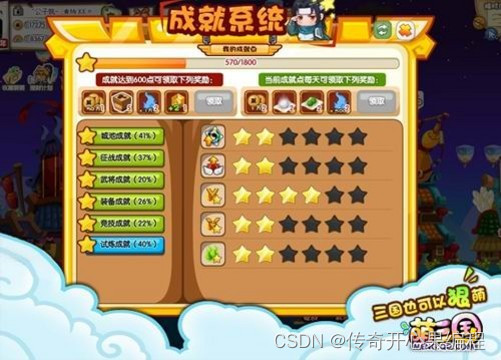 Вот пример кода для добавления таблицы лидеров и системы достижений:
Вот пример кода для добавления таблицы лидеров и системы достижений:
import pygame
import random
import json
# 初始化游戏
pygame.init()
# 设置窗口大小和标题
screen_width = 800
screen_height = 600
window = pygame.display.set_mode((screen_width, screen_height))
pygame.display.set_caption("给美女打分 - 多人游戏模式")
# 加载背景音乐
pygame.mixer.music.load("background_music.mp3")
pygame.mixer.music.set_volume(0.5) # 设置音量
pygame.mixer.music.play(-1) # 循环播放背景音乐
# 加载音效
score_sound = pygame.mixer.Sound("score_sound.wav")
# 定义美女类
class Beauty(pygame.sprite.Sprite):
def __init__(self, x, y, image, score, special_attribute, speed):
super().__init__()
self.image = pygame.image.load(image) # 美女的图片资源
self.rect = self.image.get_rect()
self.rect.center = (x, y)
self.score = score # 美女的得分
self.special_attribute = special_attribute # 美女的特殊属性
self.speed = speed # 美女的移动速度
def update(self):
self.rect.x += self.speed
# 定义分数类
class Score(pygame.sprite.Sprite):
def __init__(self, x, y, player_name):
super().__init__()
self.score = 0
self.player_name = player_name # 玩家名称
self.font = pygame.font.Font(None, 36)
self.text = self.font.render(self.player_name + ": " + str(self.score), True, (255, 255, 255))
self.rect = self.text.get_rect()
self.rect.center = (x, y)
def update(self):
self.text = self.font.render(self.player_name + ": " + str(self.score), True, (255, 255, 255))
# 定义关卡类
class Level:
def __init__(self, target_score, beauties):
self.target_score = target_score # 目标得分
self.beauties = beauties # 美女列表
def is_completed(self, score):
return score >= self.target_score
# 创建精灵组
all_sprites = pygame.sprite.Group()
# 创建关卡列表
levels = [
Level(50, [
Beauty(screen_width // 2 - 100, screen_height // 2, "beauty1.png", 10, "可爱", 2),
Beauty(screen_width // 2 + 100, screen_height // 2, "beauty2.png", 20, "性感", 3)
]),
Level(100, [
Beauty(screen_width // 2 - 100, screen_height // 2, "beauty3.png", 15, "甜美", 3),
Beauty(screen_width // 2 + 100, screen_height // 2, "beauty4.png", 25, "迷人", 4)
])
]
num_players = 2 # 玩家数量
players = [] # 玩家列表
# 创建玩家对象和分数对象
for i in range(num_players):
player_name = "Player " + str(i+1)
player_score = Score(screen_width // 2, 50 + i*50, player_name)
players.append(player_score)
all_sprites.add(player_score)
current_level = 0
level = levels[current_level]
# 将当前关卡的美女添加到精灵组中
for beauty in level.beauties:
all_sprites.add(beauty)
# 加载排行榜数据
leaderboard_data = {
}
try:
with open("leaderboard.json", "r") as f:
leaderboard_data = json.load(f)
except FileNotFoundError:
pass
# 游戏主循环
running = True
clock = pygame.time.Clock()
spawn_timer = 0
difficulty_level = 1
while running:
clock.tick(60)
# 事件处理
for event in pygame.event.get():
if event.type == pygame.QUIT:
running = False
elif event.type == pygame.MOUSEBUTTONDOWN:
mouse_pos = pygame.mouse.get_pos()
clicked_sprites = [s for s in all_sprites if s.rect.collidepoint(mouse_pos)]
for sprite in clicked_sprites:
if isinstance(sprite, Beauty):
for player in players:
if player.rect.collidepoint(mouse_pos):
player.score += sprite.score
score_sound.play() # 播放得分音效
# 更新精灵组中的所有精灵
all_sprites.update()
# 控制美女的出现频率和移动速度
spawn_timer += 1
if spawn_timer >= 60 / difficulty_level:
beauty = random.choice(level.beauties)
beauty = Beauty(screen_width + 50, random.randint(50, screen_height - 50), beauty.image, beauty.score, beauty.special_attribute, random.randint(2, 4))
all_sprites.add(beauty)
spawn_timer = 0
# 检查当前关卡是否完成
if level.is_completed(players[0].score):
current_level += 1
if current_level < len(levels):
level = levels[current_level]
for player in players:
player.score = 0
for beauty in level.beauties:
all_sprites.add(beauty)
else:
running = False
# 绘制背景
window.fill((0, 0, 0))
# 绘制所有精灵
all_sprites.draw(window)
# 刷新屏幕
pygame.display.flip()
# 停止背景音乐
pygame.mixer.music.stop()
# 更新排行榜数据
for player in players:
if player.player_name not in leaderboard_data:
leaderboard_data[player.player_name] = player.score
else:
leaderboard_data[player.player_name] = max(leaderboard_data[player.player_name], player.score)
# 保存排行榜数据
with open("leaderboard.json", "w") as f:
json.dump(leaderboard_data, f)
# 输出排行榜
sorted_leaderboard = sorted(leaderboard_data.items(), key=lambda x: x[1], reverse=True)
print("排行榜:")
for i, (player_name, score) in enumerate(sorted_leaderboard):
print(f"{
i+1}. {
player_name}: {
score}")
# 退出游戏
pygame.quit()
В этом примере кода мы используем jsonмодули для загрузки и сохранения данных таблицы лидеров. После завершения основного цикла игры мы обновляем данные таблицы лидеров на основе очков игрока и сохраняем данные таблицы лидеров в файл leaderboard.json. Наконец, мы сортируем данные рейтинга и выводим содержимое рейтинга.
Примечание. Вам необходимо подготовить соответствующие ресурсы изображений красоты («beauty1.png», «beauty2.png», «beauty3.png», «beauty4.png») и поместить их в тот же каталог, что и пример кода. Убедитесь, что пути к музыкальным файлам и файлам звуковых эффектов указаны правильно.
11. Добавьте пример кода эффекта анимации
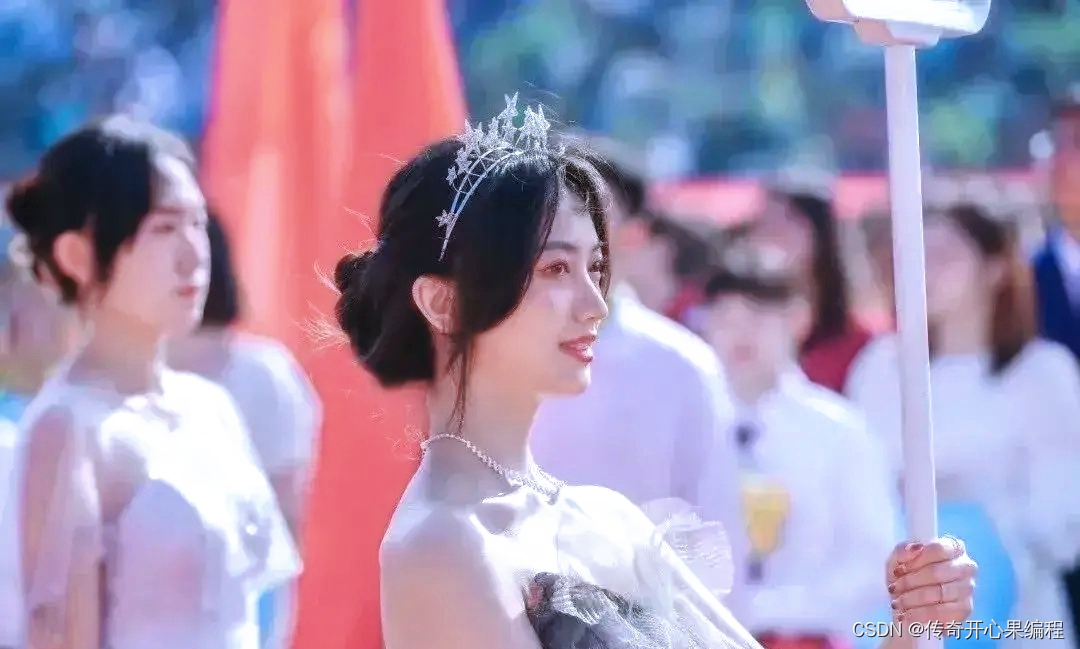 Вот пример кода для анимации появления, исчезновения и подсчета очков красавиц:
Вот пример кода для анимации появления, исчезновения и подсчета очков красавиц:
import pygame
import random
# 初始化游戏
pygame.init()
# 设置窗口大小和标题
screen_width = 800
screen_height = 600
window = pygame.display.set_mode((screen_width, screen_height))
pygame.display.set_caption("给美女打分 - 多人游戏模式")
# 加载背景音乐
pygame.mixer.music.load("background_music.mp3")
pygame.mixer.music.set_volume(0.5) # 设置音量
pygame.mixer.music.play(-1) # 循环播放背景音乐
# 加载音效
score_sound = pygame.mixer.Sound("score_sound.wav")
# 定义美女类
class Beauty(pygame.sprite.Sprite):
def __init__(self, x, y, image, score, special_attribute, speed):
super().__init__()
self.image = pygame.image.load(image) # 美女的图片资源
self.rect = self.image.get_rect()
self.rect.center = (x, y)
self.score = score # 美女的得分
self.special_attribute = special_attribute # 美女的特殊属性
self.speed = speed # 美女的移动速度
self.animation_timer = 0
self.animation_duration = 30
def update(self):
self.rect.x += self.speed
# 美女出现动画效果
if self.animation_timer < self.animation_duration:
self.rect.y -= 2
self.animation_timer += 1
# 定义分数类
class Score(pygame.sprite.Sprite):
def __init__(self, x, y, player_name):
super().__init__()
self.score = 0
self.player_name = player_name # 玩家名称
self.font = pygame.font.Font(None, 36)
self.text = self.font.render(self.player_name + ": " + str(self.score), True, (255, 255, 255))
self.rect = self.text.get_rect()
self.rect.center = (x, y)
self.animation_timer = 0
self.animation_duration = 30
def update(self):
# 分数增加动画效果
if self.animation_timer < self.animation_duration:
self.rect.y -= 2
self.animation_timer += 1
# 定义关卡类
class Level:
def __init__(self, target_score, beauties):
self.target_score = target_score # 目标得分
self.beauties = beauties # 美女列表
def is_completed(self, score):
return score >= self.target_score
# 创建精灵组
all_sprites = pygame.sprite.Group()
# 创建关卡列表
levels = [
Level(50, [
Beauty(screen_width // 2 - 100, screen_height // 2, "beauty1.png", 10, "可爱", 2),
Beauty(screen_width // 2 + 100, screen_height // 2, "beauty2.png", 20, "性感", 3)
]),
Level(100, [
Beauty(screen_width // 2 - 100, screen_height // 2, "beauty3.png", 15, "甜美", 3),
Beauty(screen_width // 2 + 100, screen_height // 2, "beauty4.png", 25, "迷人", 4)
])
]
num_players = 2 # 玩家数量
players = [] # 玩家列表
# 创建玩家对象和分数对象
for i in range(num_players):
player_name = "Player " + str(i+1)
player_score = Score(screen_width // 2, 50 + i*50, player_name)
players.append(player_score)
all_sprites.add(player_score)
current_level = 0
level = levels[current_level]
# 将当前关卡的美女添加到精灵组中
for beauty in level.beauties:
all_sprites.add(beauty)
# 加载排行榜数据
leaderboard_data = {
}
try:
with open("leaderboard.json", "r") as f:
leaderboard_data = json.load(f)
except FileNotFoundError:
pass
# 游戏主循环
running = True
clock = pygame.time.Clock()
spawn_timer = 0
difficulty_level = 1
while running:
clock.tick(60)
# 事件处理
for event in pygame.event.get():
if event.type == pygame.QUIT:
running = False
elif event.type == pygame.MOUSEBUTTONDOWN:
mouse_pos = pygame.mouse.get_pos()
clicked_sprites = [s for s in all_sprites if s.rect.collidepoint(mouse_pos)]
for sprite in clicked_sprites:
if isinstance(sprite, Beauty):
for player in players:
if player.rect.collidepoint(mouse_pos):
player.score += sprite.score
score_sound.play() # 播放得分音效
# 更新精灵组中的所有精灵
all_sprites.update()
# 控制美女的出现频率和移动速度
spawn_timer += 1
if spawn_timer >= 60 / difficulty_level:
beauty = random.choice(level.beauties)
beauty = Beauty(screen_width + 50, random.randint(50, screen_height - 50), beauty.image, beauty.score, beauty.special_attribute, random.randint(2, 4))
all_sprites.add(beauty)
spawn_timer = 0
# 检查当前关卡是否完成
if level.is_completed(players[0].score):
current_level += 1
if current_level < len(levels):
level = levels[current_level]
for player in players:
player.score = 0
for beauty in level.beauties:
all_sprites.add(beauty)
else:
running = False
# 绘制背景
window.fill((0, 0, 0))
# 绘制所有精灵
all_sprites.draw(window)
# 刷新屏幕
pygame.display.flip()
# 停止背景音乐
pygame.mixer.music.stop()
# 更新排行榜数据
for player in players:
if player.player_name not in leaderboard_data:
leaderboard_data[player.player_name] = player.score
else:
leaderboard_data[player.player_name] = max(leaderboard_data[player.player_name], player.score)
# 保存排行榜数据
with open("leaderboard.json", "w") as f:
json.dump(leaderboard_data, f)
# 输出排行榜
sorted_leaderboard = sorted(leaderboard_data.items(), key=lambda x: x[1], reverse=True)
print("排行榜:")
for i, (player_name, score) in enumerate(sorted_leaderboard):
print(f"{
i+1}. {
player_name}: {
score}")
# 退出游戏
pygame.quit()
В этом примере кода мы анимируем внешний вид красавицы и набираем очки. В Beautyкласс и Scoreкласс мы добавили свойства animation_timerи animation_durationдля управления длительностью и текущим временем анимации. В updateэтом методе мы изменяем положение объектов красоты и оцениваем их в соответствии с ходом анимации, чтобы добиться эффекта анимации.
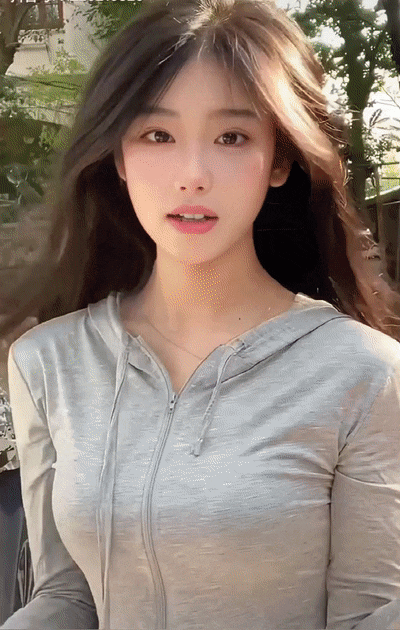
Примечание. Вам необходимо подготовить соответствующие ресурсы изображений красоты («beauty1.png», «beauty2.png», «beauty3.png», «beauty4.png») и поместить их в тот же каталог, что и пример кода. Убедитесь, что пути к музыкальным файлам и файлам звуковых эффектов указаны правильно.